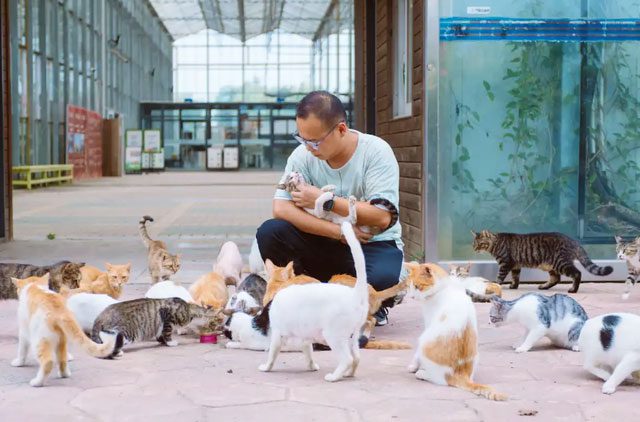Animal hoarding can be defined as the act of keeping an unusually large number of animals without the ability to care for them, providing minimal standards of nutrition and sanitation.
Animal Hoarding Syndrome
According to experts, this syndrome is known as Noah’s Syndrome, also referred to as “animal hoarding”. The name is derived from the biblical character Noah, who built a massive ark and brought a large number of animals aboard.
In reality, very few people are aware of animal hoarding syndrome, yet it is a public health issue that can affect entire communities.
Individuals with animal hoarding tendencies often live in squalor: Urine and feces can stain walls and floors, while the home deteriorates due to poor sanitary conditions.
Approximately 2,000 new cases of animal hoarding are identified in the United States each year, and the number behind closed doors may be even higher.
The American Psychiatric Association points out that hoarding may affect 2-5% of the adult population in the United States. The most commonly hoarded animals are cats and dogs, although any type of animal can be hoarded, including large farm animals. In a study of 71 animal hoarders, about 82% involved cats, 55% dogs, 17% birds, 6% reptiles, 11% small mammals, 6% horses, and 6% livestock, sheep, or goats.
The obsession with animal ownership is much more complex than hoarding objects, as it stems from various motivations.

Hoarding behavior can be a symptom of obsessive-compulsive disorder and related disorders. (Illustrative image).
The Diagnostic and Statistical Manual of Mental Disorders (DSM) indicates that approximately 75% of individuals with hoarding disorder also have co-occurring mood or anxiety disorders. Hoarding behavior can be a symptom of obsessive-compulsive disorder and related conditions, such as delusional disorder, major depressive disorder, social anxiety disorder, and generalized anxiety disorder.
Some believe that hoarding can be an inappropriate response to cope with a traumatic event, such as the sudden death of a loved one. A typical (not exclusive) profile of an animal hoarder is a woman over 60 years of age who cares for more than 40 animals and has collected animals for over 20 years.
There are three basic types of individuals with Noah’s Syndrome: Overwhelmed Caregiver (OC), Rescue Hoarder (RH), and Exploiter Hoarder.
The first two types may suffer from delusional disorders such as “savior complex.” They believe they are helping animals, despite the worsening health and conditions of the animals.
“Overwhelmed Caregiver” typically feels responsible for caring for animals but is overwhelmed or pressured by the number of animals requiring care. This often occurs after life changes, including health, economic, social, or occupational circumstances.
Overwhelmed caregivers often have a strong bond with their animals and strive to care for them. However, they frequently cannot meet the care needs of all their animals, leading to subsequent issues.
“Rescue Hoarder” is the most common type among those with animal hoarding tendencies.
They feel emotionally compelled to “rescue” all animals and may refuse any possibility of euthanasia, even if an animal is terminally ill or suffering.
They often resist intervention from authorities, as they do not recognize the harm they are causing. Additionally, they may view animal control agencies as adversaries for attempting to remove animals from their care.
Among the three types, “Exploiter Hoarder” is the most difficult to manage because they may have antisocial personality disorder. They may be aware of their situation but lack empathy for humans or animals and are motivated to hoard animals for financial gain.
How to Help Individuals with Animal Hoarding Syndrome
The best approach to address this issue so far is to identify cases of animal hoarding early and collaborate with authorities to resolve them.
The American Society for the Prevention of Cruelty to Animals (ASPCA) has implemented a program involving experts such as social workers, veterinarians, animal behavior researchers, humane law enforcement, and a range of human and animal services.
However, society generally tends to overlook individuals with Noah’s Syndrome, especially when seeing images of filthy homes with sickly animals. Yet, we must acknowledge that this is a serious mental health syndrome that requires treatment, not merely a matter of choice or will.
If we want to effectively reduce the number of “animal hoarding” cases, we must raise awareness of this syndrome and actively pursue more therapeutic research.


















































